Before I went dock fouling, I’d never heard of a hammerhead doto. These minute nudibranchs (only 11 millimeters long) are adorned with stalks of waving “pom poms” that make them look like exotic confections. The stalks are technically cerata, which sea slugs use for respiration, digestion, and sometimes defense. These bumpy little characters are one of the endless wonders awaiting those willing to get down on their bellies to explore the amazing goings on beneath boat docks.
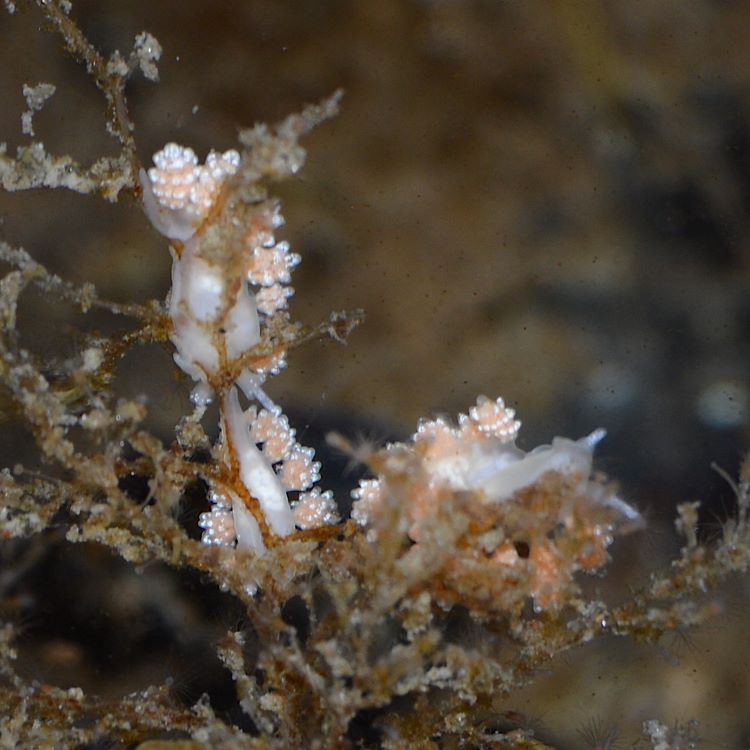
Dock fouling is the term given to the seafaring flora and fauna that attach to and “foul” boats, moorings, docks, and other floating structures. Though some consider this natural growth a nuisance, dock foulers adopted the term to describe the activity of visiting docks to enjoy these creatures. Similar to tide pooling, but accessible year-round no matter the tide level, dock fouling offers the benefits of snorkeling without need of a wetsuit.
You may have dock fouled before without even knowing it. I first “fouled” near the Point Defiance ferry dock when a long wait prompted me to wander the nearby docks where I observed a pulsating world beneath the surface. The sunlight spotlighted colorful sea urchins and carnivalesque feather duster worms, revealing a world that looked remarkably tropical. I vowed to explore dockside viewing closer to home and soon learned about dock fouling as a hobby and naturalist pursuit.
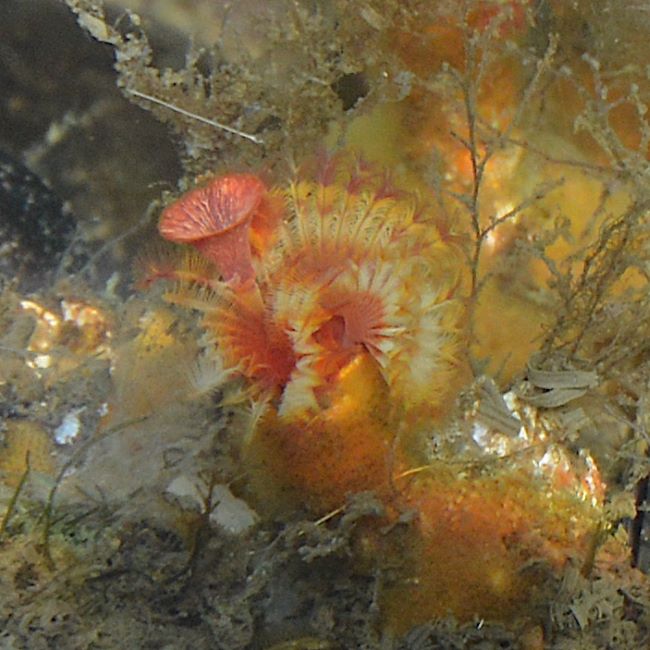
I share a love of nature curiosities with island artist and naturalist Bella Ormseth, and we hatched a plan with and her friend and naturalist Beth Nauman-Montana to survey the best dock-fouling spot on Vashon—the Dockton docks. Floating docks are best for dock fouling because their undersides are always submerged, and you can get close to your subjects. We committed to visiting once a month for a year and made our first foray in October 2022.
“I think what charmed us is here’s an activity that’s easy to do—you just lie on your stomach on the dock and it’s relatively simple to see things you’ve never seen before,” Ormseth says. “Here’s this whole world that I didn’t know existed before.”
“I like the ongoing nature of the project and the fact that the more you look, the more you see,” Nauman-Montana says. “The day we discovered the hammerhead dotos we hadn’t noticed them [they are very tiny and well-hidden amidst the flowing hydroids they feed on], and then we saw them all at once! There’s something to be said for the repeated observation aspect of the exercise.”
As a sailor herself, Ormseth is aware of the impact of boaters’ irresponsible dumping practices. She muses that the Dockton finds could be used for interpretive signs that might inspire boaters to take better care if they were aware of those dwelling below.
After completing a year of monthly visits last October, we enthusiastically committed to another year of discovery. To date, we have recorded nearly 60 different species, from bread crumb sponges to skeleton shrimp. I enjoy learning from curious friends and the chance to peek in on other creatures’ lives—watching a barnacle wave its feathery cirri (legs) arms to feed, marveling at a giant nudibranch’s haute couture “outfit” as it winds by, or admiring a kelp crab’s deft pinchers as it snacks on piling treats.
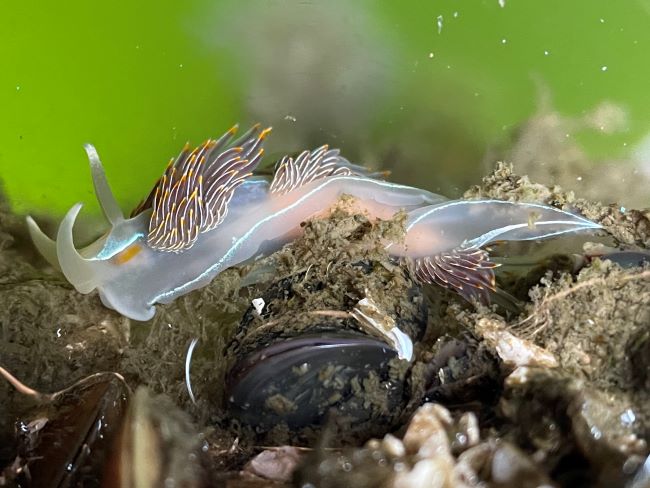
“I like how it became familiar because we kept seeing many of the same things,” says Nauman-Montana. “Every month it’s comforting to say, ‘Oh hello, blue mussel complex,’ and ‘There you are, again, plumose anemone’—like seeing old friends. There is this regular cast of characters and a few guest stars.”
These stars include at least two new records for the iNaturalist Vashon Biodiversity Project started by Vashon Nature Center. (When someone posts an iNaturalist observation anywhere on Vashon-Maury, it is automatically added to the project list. To date, more than 1,000 observers have documented more than 3,400 possible species!).
Thanks to Nauman-Montana’s keen eyes, the Dockton dock foulers’ first-time records include the jelly crust tunicate and a horseshoe worm (see photos). We also cataloged several species for which there are only a few island records (some by SCUBA divers) of hammerhead dotos, leopard dorids, and peppered sea cucumbers (all as impressive to look at as their common names suggest).
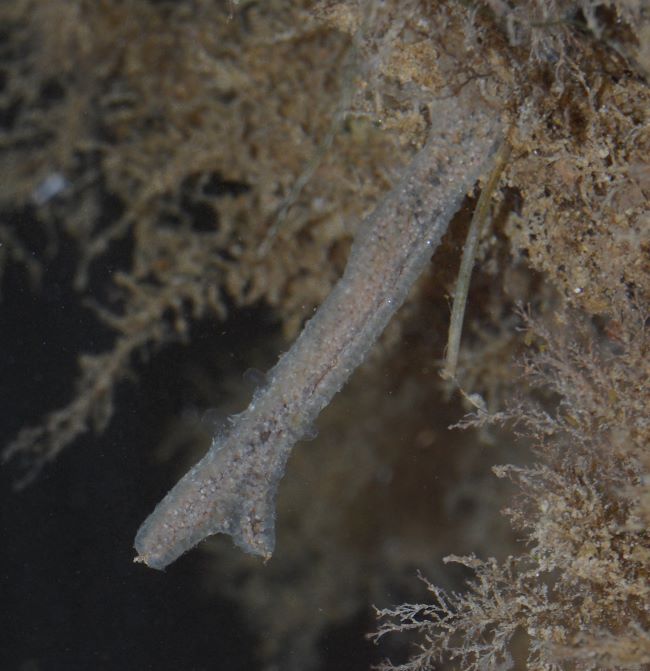
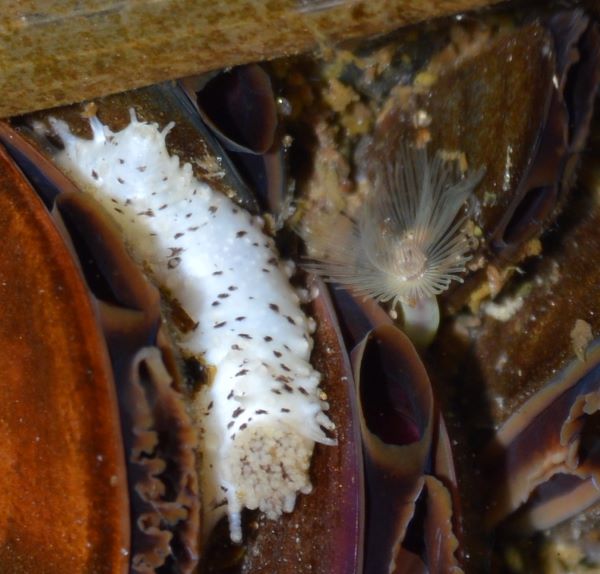
“I also like that we’ve had some interesting interactions with the public,” Ormseth says. “People wonder what we’re up to and assume we’re looking at fish [which we do, too!]. And then we point out some really cool nudibranch and they get that childlike wonder.”
Ready for your dose of awe? You can try dock fouling yourself with a few tips from the experts.
What to bring:
A washable towel or blanket for comfort and to protect your clothing from bird poop, a camera with a wrist strap or a waterproof case, and a flashlight. Optional: underwater viewing tool like this one: Amazon.com : REEF TOURER Underwater Snorkeling Viewing Bucket, Blue : Sports & Outdoors
Resources:
Record your finds on iNaturalist, a great place to get help with IDs and learn from other dock foulers.
A good overview of dock fouling with docks to peruse in the Salish Sea: What is dock fouling? | Nature Lookings.
Featured image: Vashon Nature Center interns and Seattle Aquarium Empathy Fellows do some dock fouling with Science Director Bianca Perla (first in line) during a break from their beach survey work at Dockton Park in summer of 2023. photo credit: Maria Metler


The ‘opalescent nudibranch’ featured in this article is actually a thick-horned nudibranch, Hermissenda crassicornis.
https://vashonnaturecenter.org/dock-fouling-offers-glimpses-of-other-worlds/